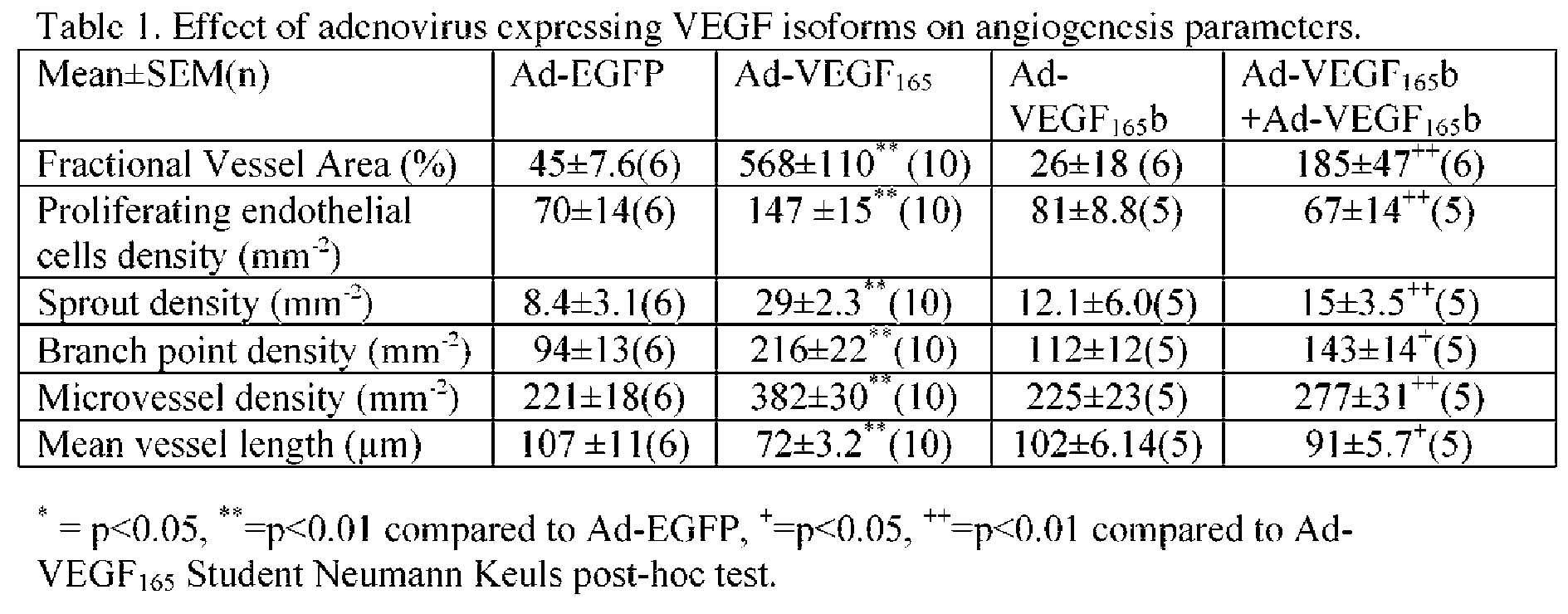VEGF is the dominant angiogenic factor in angiogenesis. Here we describe the effect of a novel splice variant of VEGF, VEGF165b, in an in vivo mesenteric adenovirus mediated model of VEGF induced angiogenesis.
Male Wistar rats (250g) were anaesthetised with halothane inhalation at 5 % for induction and 3 % for maintainence, and the gut exposed after laparotomy. 25 µl (1-3.3 X 108TCID50/ml) of adenovirus (AdV) expressing EGFP (Ad-EGFP, control), VEGF165 (Ad-VEGF) or VEGF165b (Ad-VEGF165b), or 50 µl of both (25 µl each) was injected into fat pad adjacent to a mesenteric connective tissue panel that had few blood vessels and no overt angiogenesis. 0.6 % Monastral blue, diluted in saline, was injected into the fats at both sides of the AdV injection site. The mesentery was replaced in the animal and the body wall and skin sutured. The rats were allowed to recover and kept for 6 days under normal housing conditions. The rats were again anaesthetised with halothane, the mesentery exposed and vessels imaged using a digital imaging system (Leica). The rats were then humanely killed by cervical dislocation before recovery from the anaesthetic. The mesentery was dissected and immunofluorescence staining of the whole mount mesenteries with G simplificolia isolectin (endothelial cells), anti-Ki67 (proliferating nuclei), phalloidin (actin) and Hoechst 33324 (nuclei), carried out and microvascular parameters associated with angiogenesis measured. Unlike Ad-VEGF165 injection, Ad-VEGF165b injection did not cause a significant increase in the relative fractional vessel area (FVA) of the mesentery compared with the control group, and injection of both Ad-VEGF165 and Ad-VEGF165b into the same fat pad resulted in a lower FVA compared with the Ad-VEGF165 (P < 0.001 ANOVA). This was also true for the increase in proliferating endothelial cells density, sprout density, branch point density, microvessel density, and for the decrease in mean vessel length (all P < 0.01 ANOVA).
These results show that VEGF165b does not cause angiogenesis itself but inhibits the angiogenic effect caused by VEGF165 in vivo.
This work was supported by Wellcome Trust grant 69029 and AICR 02-053.

